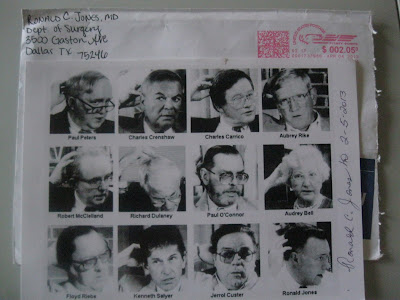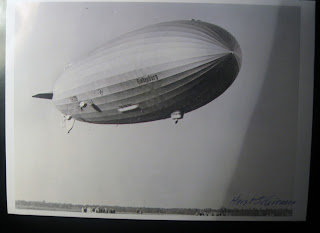A veteran actor, Duvall has starred in some of the most acclaimed and popular films and TV shows of all time, among them The Twilight Zone, The Outer Limits, To Kill a Mockingbird, THX 1138, Joe Kidd, The Godfather, The Godfather Part II, MASH, Network, The Apostle, True Grit, The Conversation, Apocalypse Now, Falling Down, Tender Mercies, The Natural and Lonesome Dove.
 He began appearing in theater during the late 1950s, moving into television and film roles during the early 1960s in such works as To Kill a Mockingbird (1962) (as Boo Radley) and Captain Newman, M.D. (1963). He landed many of his most famous roles during the early 1970s with films like the blockbuster comedy MASH (1970) (as Major Frank Burns) and the lead in George Lucas' THX 1138 (1971), as well as Duvall's own favorite, Horton Foote's adaptation of William Faulkner's Tomorrow (1972), a project developed at The Actors Studio. This was followed by a series of critically lauded performances in films which were also commercial successes.
He began appearing in theater during the late 1950s, moving into television and film roles during the early 1960s in such works as To Kill a Mockingbird (1962) (as Boo Radley) and Captain Newman, M.D. (1963). He landed many of his most famous roles during the early 1970s with films like the blockbuster comedy MASH (1970) (as Major Frank Burns) and the lead in George Lucas' THX 1138 (1971), as well as Duvall's own favorite, Horton Foote's adaptation of William Faulkner's Tomorrow (1972), a project developed at The Actors Studio. This was followed by a series of critically lauded performances in films which were also commercial successes.Since then Duvall has continued to act in both film and television with such productions as Tender Mercies (1983) (for which he won an Academy Award), The Natural (1984), Colors (1988), the television mini-series Lonesome Dove (1989), Stalin (1992), The Man Who Captured Eichmann (1996), A Family Thing (1996), The Apostle (1997) (which he also wrote and directed), A Civil Action (1998), Gods and Generals (2003), Broken Trail (2006) and Get Low (2010).
Duvall became an important presence in American films beginning in the 1970s. He drew a considerable amount of attention in 1970 for his portrayal of Major Frank Burns in the film MASH and for his portrayal of the title role in the cult classic THX 1138 in 1971. His first major critical success came portraying Tom Hagen in The Godfather (1972) and The Godfather Part II (1974). The former film earned him an Academy Award nomination for Best Supporting Actor. In 1976 Duvall played supporting roles in The Eagle Has Landed and as Dr. Watson in The Seven-Per-Cent Solution opposite Nicol Williamson, Alan Arkin, Vanessa Redgrave and Laurence Olivier.
Duvall received another Oscar nomination for Best Supporting Actor and won both a BAFTA Award and Golden Globe Award for his role as Lt. Colonel Kilgore in Apocalypse Now (1979). His line "I love the smell of napalm in the morning" from Apocalypse Now is regarded as iconic in cinema history. The full text is as follows:
Duvall received a BAFTA Award nomination for his portrayal of detestable television executive Frank Hackett in the critically acclaimed film Network (1976) and garnered an Oscar nomination for Best Actor in a Leading Role in The Great Santini (1979) as the hard-boiled Marine LtCol. "Bull" Meechum. The latter role was loosely based on a Marine aviator, Colonel Donald Conroy, the father of the book's author Pat Conroy. He also portrayed United States President Dwight D. Eisenhower in the television miniseries Ike (1979).You smell that? Do you smell that? Napalm, son. Nothing else in the world smells like that. I love the smell of napalm in the morning. You know, one time we had a hill bombed, for twelve hours. When it was all over I walked up. We didn't find one of 'em, not one stinkin' dink body. But the smell! You know - that gasoline smell... the whole hill! Smelled like... victory. (Pause) Some day this war is going to end...
In 1977 Duvall returned to Broadway to appear as Walter Cole in David Mamet's American Buffalo. For his performance he received a Drama Desk Award nomination for Outstanding Actor in a Play.
Duvall continued to appear in films during the 1980s, including the roles of cynical sportswriter Max Mercy in The Natural (1984) and Los Angeles police officer Bob Hodges in Colors (1988). He won an Oscar for Best Actor as country western singer Mac Sledge in Tender Mercies (1983). Duvall was said[by whom?] to have written the music, but the actor said he wrote only a few "background, secondary songs." Duvall did do his own singing, insisting it be added to his contract that he sing the songs himself; Duvall said, "What's the point if you're not going to do your own [singing]? They're just going to dub somebody else? I mean, there's no point to that."[25]
Actress Tess Harper, who co-starred, said Duvall inhabited the character so fully that she only got to know Mac Sledge and not Duvall himself. Director Bruce Beresford, too, said the transformation was so believable to him that he could feel his skin crawling up the back of his neck the first day of filming with Duvall. Beresford said of the actor, "Duvall has the ability to completely inhabit the person he's acting. He totally and utterly becomes that person to a degree which is uncanny."Nevertheless, Duvall and Beresford did not get along well during the production and often clashed during filming, including one day in which Beresford walked off the set in frustration.
 In 1989, Duvall appeared in the miniseries Lonesome Dove in the role of Augustus "Gus" McCrae. He has stated in several forums,[citation needed] including CBS Sunday Morning,[date missing] that this particular role was his personal favorite. He won a Golden Globe Award and earned an Emmy Award
nomination. For his role as a former Texas Ranger peace officer, Duvall
was trained in the use of Walker revolvers by the Texas marksman Joe Bowman.
In 1989, Duvall appeared in the miniseries Lonesome Dove in the role of Augustus "Gus" McCrae. He has stated in several forums,[citation needed] including CBS Sunday Morning,[date missing] that this particular role was his personal favorite. He won a Golden Globe Award and earned an Emmy Award
nomination. For his role as a former Texas Ranger peace officer, Duvall
was trained in the use of Walker revolvers by the Texas marksman Joe Bowman.Duvall has maintained a busy film career, sometimes appearing in as many as four in one year. He received Oscar nominations for his portrayals of evangelical preacher Euliss "Sonny" Dewey in The Apostle (1997) — a film he also wrote and directed — and lawyer Jerome Facher in A Civil Action (1998).
He directed Assassination Tango (2002), a thriller about one of his favorite hobbies, tango. He portrayed General Robert E. Lee in Gods and Generals in 2003; he is a relative of the Confederate general.
Other roles during this period that displayed the actor's wide range included that of a crew chief in Days of Thunder (1990), a retiring cop in Falling Down (1992), a Hispanic barber in Wrestling Ernest Hemingway (1993), a New York tabloid editor in The Paper (1994), a rural doctor in Phenomenon (1996), an abusive father in 1996's Slingblade, an astronaut in Deep Impact (1998), a trail boss in Open Range (2003), a soccer coach in the comedy Kicking & Screaming, an old free spirit in Secondhand Lions (2003), a Las Vegas poker champion in Lucky You and a New York police chief in We Own the Night (both 2007).
He received a star on the Hollywood Walk of Fame on September 18, 2003.[citation needed]
Duvall has periodically worked in television during from the 1990s on. He won a Golden Globe Award and garnered an Emmy nomination for his portrayal of Joseph Stalin in the 1992 television film Stalin. He was nominated for an Emmy again in 1997 for portraying Adolf Eichmann in The Man Who Captured Eichmann. In 2006, he won an Emmy for the role of Prentice "Print" Ritter in the revisionist Western miniseries Broken Trail.
In 2005, Duvall was awarded a National Medal of Arts by President George W. Bush at the White House.[28]
Duvall founded a production company, Butcher's Run Films
































